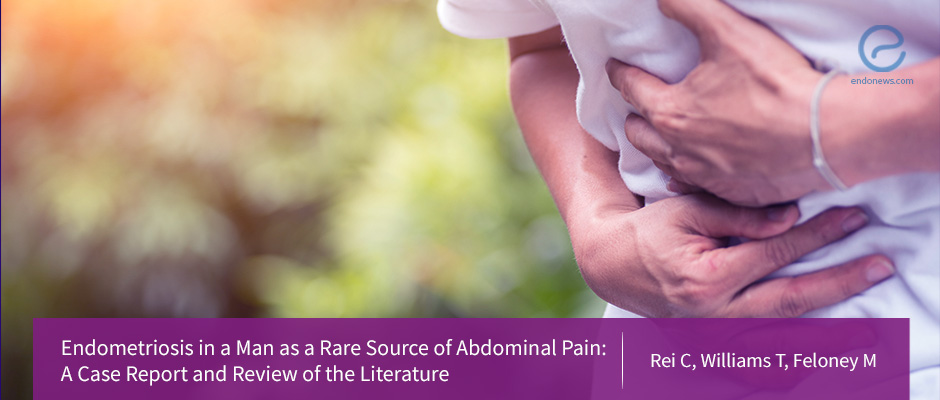Endometriosis in a Man as a Rare Source of Abdominal Pain
Jun 12, 2018
Dr. Feloney group reports a rare case of a 40-year-old man with endometriosis.
Key Points
Highlight:
- Dr. Feloney group from Creighton University School of Medicine reports a case of endometriosis in a 40-year-old man that was confirmed through immunohistochemical analysis. They postulate hormonal alterations secondary to obesity as the main contributing factor to this patient’s pathology.
Background:
- Endometriosis has largely been found in women. However, in extremely rare cases, endometriosis is also found in men with a total of 16 cases previously reported in the literature.
- In male endometriosis cases, it was most commonly found attached to the bladder, lower abdominal wall, and inguinal region.
Key points:
- A 40-year-old man with no significant past medical history presented to his primary care physician with abdominal pain.
- His medical history was unremarkable aside from asthma, hypertension, and obesity with BMI of 35.7, while family history was significant for ovarian cancer in his mother.
- A CT scan of the abdomen and pelvis revealed a large midline pelvic complex cystic lesion that appeared to arise from the right vas deferens.
- Gross exam of the mass in the operating room revealed a central cystic cavity with cloudy brown fluid.
- Further, the results from immunological stains performed by pathology revealed a highly unexpected diagnosis with an immunoprofile consistent with endometriosis.
- The H&E stain displayed a layer of endometrial epithelium with underlying stroma confirmed by strong positive CK7 and estrogen receptors and subepithelial CD10.
Discussion:
- Obesity
- There is a clear, positive association between increased obesity in men and increased estrogen production.
- It is associated with increased aromatization activity of adipose tissue, overexpression of proinflammatory cytokines, insulin resistance, and hyperactivation of insulin-like growth factor pathways.
- Embryonic cell rests
- The Mullerian ducts, which form the majority of the female genitourinary tract, normally disintegrate in males under the influence of anti-Mullerian hormone.
- Mullerian cells may rarely persist between the ejaculatory duct and vas deferens and be induced into endometrial tissue.
- Inadequate immune function
- Various studies have cited alterations in both cell-mediated and humoral immunity that coincide with the development of endometriosis.
Lay Summary
Endometriosis occurs when a tissue resembling endometrial glands and stroma grows in ectopic sites, commonly causing infertility and pain. Endometriosis has largely been found in women of reproductive age. However, in extremely rare cases, it is also found in men with a total of 16 cases previously reported in the literature. In male endometriosis cases, it was most commonly found attached to the bladder, lower abdominal wall, and inguinal region.
In this paper, published in Case Reports in Obstetrics and Gynecology, Dr. Feloney group from Creighton University School of Medicine reports a case of endometriosis in a 40-year-old man. He presented to his primary care physician with abdominal pain. His medical history was unremarkable aside from asthma, hypertension, and obesity with BMI of 35.7, while family history was significant for ovarian cancer in his mother. Further imaging discovered a midline mass. Surgical removal of the mass and histological investigations revealed a highly unexpected diagnosis of endometriosis.
There are multiple theories on the etiology of both female and male endometriosis. First, there is a clear, positive association between increased obesity in men and increased estrogen production. In relation to male endometriosis, it could be theorized that this increased aromatization in adipose tissue could elevate estrogen levels to drive the growth of endometriosis. Second, the induction theory of endometriosis hypothesizes that embryonic cell rests may persist in males and be induced into endometrial tissue. The last theory of endometriosis involves inadequate immune function. Various studies have cited alterations in both cell-mediated and humoral immunity that coincide with the development of endometriosis.
Research Source: https://www.ncbi.nlm.nih.gov/pubmed/29670782
Endometriosis Male endometriosis Abdominal pain etiopathogenesis CD10 midline mass estrogen immune

